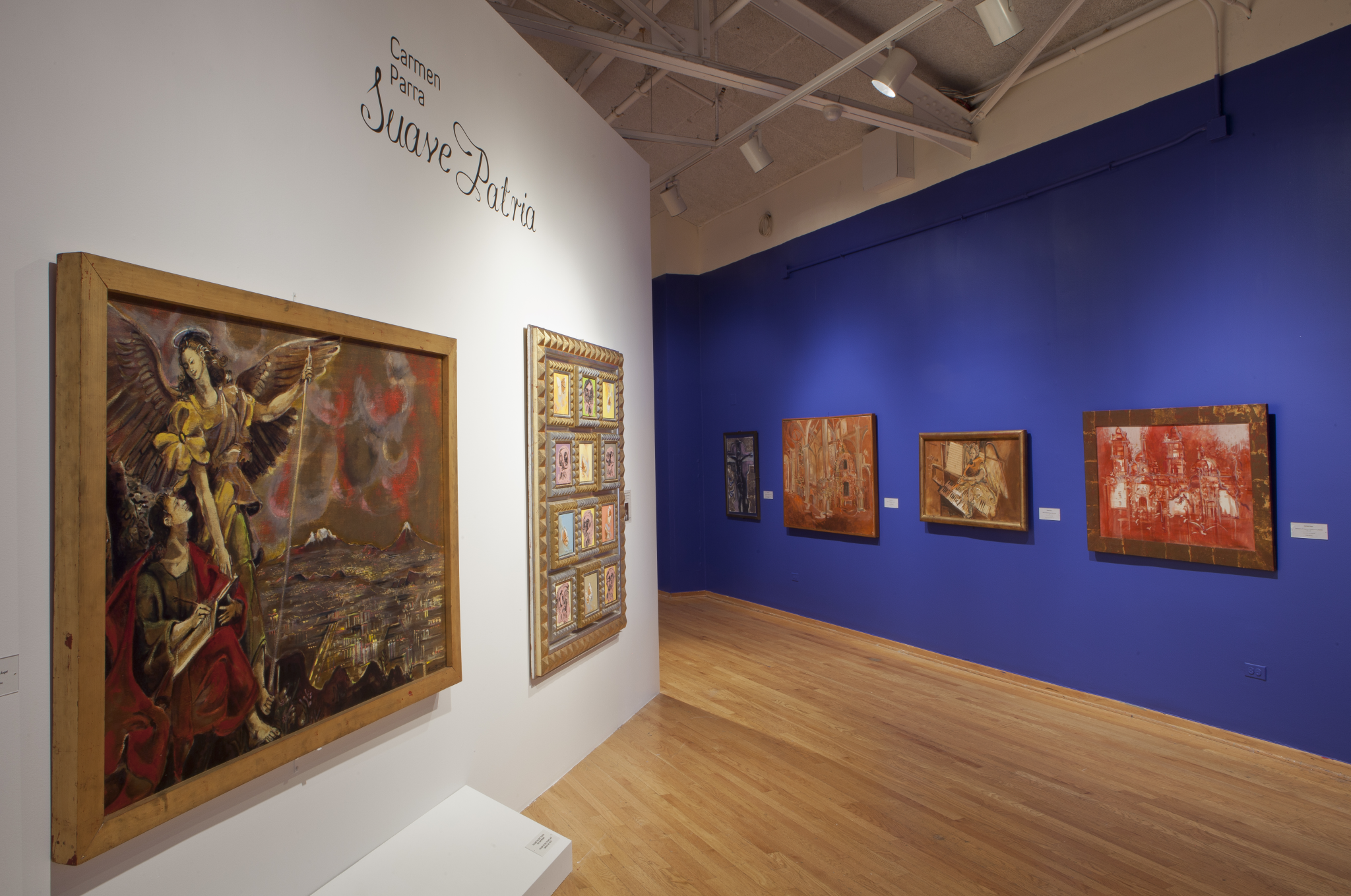In the deep blue, quiet room, the sensation of the ceremonial-like importance with which Carmen Parra imbues her work is striking. The golden hues jump from the wall’s darker background, creating a pleasant contrast. The colors on most of the canvases are light, closer to pastels, refreshing to the eye. The space is open, uncrowded, and calming. Your focus can easily shift, but is not over-stimulated.
Parra’s new exhibit “Carmen Parra: Suave Patria,” currently on display at the National Museum of Mexican Art, is the result of nearly a year of work from the Mexican Consulate and the NMMA, the research of the show’s curator Delores Mercado, and assistance from cultural attachés, registrars, and collectors.
The exhibit, like much of Parra’s art, is focused upon the aspects of national identity that fascinate her the most. As Mercado explains, “She works with things close to her heart.” The Metropolitan Cathedral in Mexico City is a particularly important symbol that she examines and reexamines throughout her work. Mercado says Parra began to research the cathedral in the 1970s, and has explored it in her art ever since. “She will work on other pieces for a while, then go back to the theme of the cathedral,” Mercado noted.
Parra’s interest in the cathedral may stem from her family heritage. Her father, Manuel Parra, was a well-known Mexican architect, renowned for reinventing urban areas by reworking pieces of demolished buildings into contemporary structures. Parra’s father took her on trips to Baroque-influenced buildings, whose features, especially the gold, she found striking. The architecture Parra saw with her father inspired not only her subject matter, but also the style of her artistic output. Parra’s work has an architectural feel, as Mercado noted; Parra even makes the frames part of her piece. Furthermore, the method of reworking the familiar, which she first observed in her father, is integral to Parra’s art.
Even the name of the exhibit itself is a reworking, borrowed from the poem “La suave patria” by Ramón López Velarde. So are many of the symbols that recur in Parra’s work—the National Cathedral, religious icons, and objects of nature. The monarch butterfly is a subject of remodeling for Carmen Parra, as is the royal eagle—both symbols of Mexican patrimony and pride.
The importance of reworking the familiar is not hidden in the exhibit—underneath an array of monarch butterflies is situated a quote, in both Spanish and English, which explains this methodology: “The artist makes the subject matter his own in time to explain it to himself. It is a process of exploration.” And exploring is what Parra does best.
One such example is her piece “Virgen de Guadalupe,” in which the religious icon appears on the canvas, enshrouded by an aura of divinity. Although the golden hues are apparent here as an inspiration from the Baroque, Parra brings in contemporary elements as well, such as a bright red background.
Further exploration of the religious is clear in “San Miguel Arcángel,” a piece painted onto the same metallic gold background as “Virgen” and many of Parra’s other works. However, the process of reinvention is even more apparent here. The piece is painted onto alternately protruding and depressed cubes, five across and six down. The variant surface of the Archangel grants San Miguel an otherworldly air; he is sturdy, yet appears to be ready to shift at any moment.
One thing that makes Carmen’s work unique and worth seeing is that she resists artistic fads. “She paints what she wants—she does research,” Mercado explained. Parra “has been producing and being creative throughout her life and this [exhibit] is the result of so many years of investigating and creating.”
National Museum of Mexican Art, 1852 W. 19th Street. Through August 9. Tuesday-Sunday, 10am-5pm. Free. (312)738-1503. nationalmuseumofmexicanart.org



